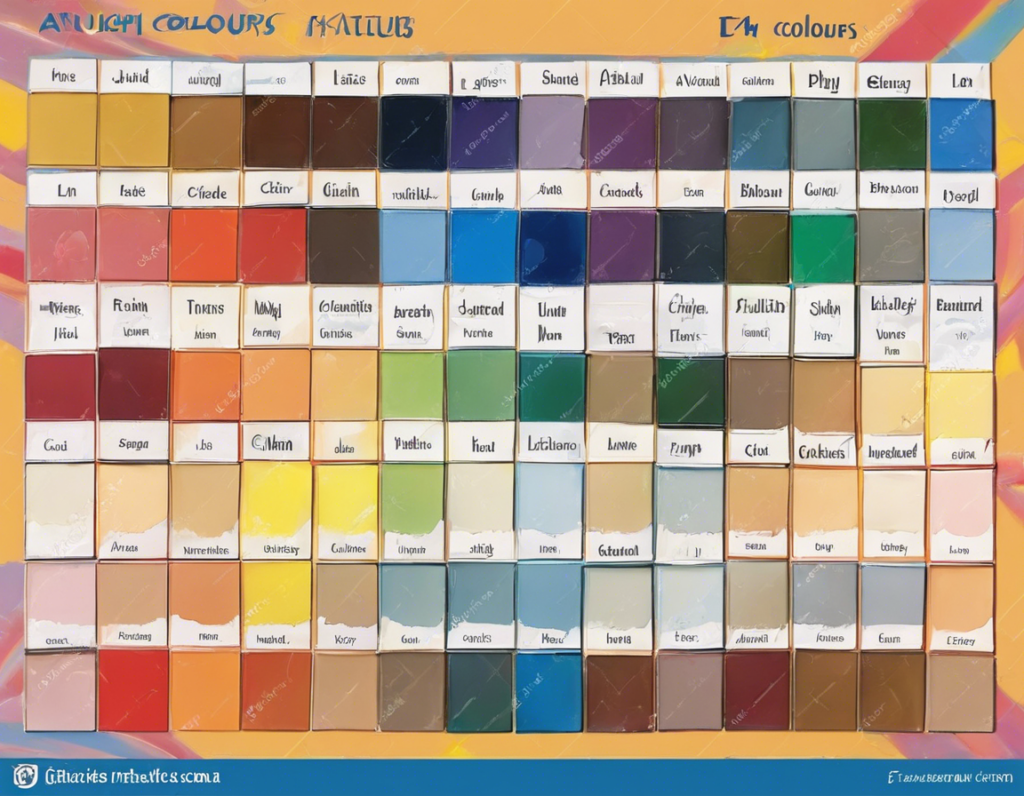
- June 21, 2024
- 6:59 pm
- No Comments
When it comes to designing visually appealing and effective charts, the choice of colors plays a crucial role. English chart colors are essential in conveying information, highlighting key points, and improving overall readability. In this comprehensive guide, we will explore the significance of color choice in charts and provide tips and best practices for selecting colors that enhance your data visualization.
Importance of Color in Charts
Color is a powerful tool in data visualization that can significantly impact how the information is perceived and understood by viewers. Here are some key reasons why color selection is important in creating charts:
Differentiation and Clarity
Different colors help distinguish between various data categories or series, making it easier for viewers to interpret the chart. When each element is assigned a unique color, it enhances clarity and prevents confusion.
Emphasis and Highlighting
Strategic use of color can draw attention to important data points, trends, or insights within the chart. By highlighting specific elements in a different color, you can guide the viewer’s focus and emphasize key findings.
Aesthetics and Engagement
Well-chosen colors not only improve the readability of the chart but also enhance its visual appeal. Aesthetically pleasing color schemes can make the chart more engaging and attract the viewer’s interest.
Best Practices for Choosing English Chart Colors
To make the most of color in your charts, it’s essential to follow some best practices for color selection. Consider the following tips when choosing colors for your English charts:
1. Use a Limited Color Palette
Avoid overwhelming viewers with a rainbow of colors in your chart. Limit the number of distinct colors to maintain clarity and coherence. A good rule of thumb is to use 3-5 colors for different categories or data series.
2. Consider Color Blindness
Approximately 8% of men and 0.5% of women experience some form of color blindness. Choose colors that are distinguishable even for viewers with color vision deficiencies. Tools like Color Brewer can help you generate color-blind friendly palettes.
3. Contrast for Readability
Ensure there is sufficient contrast between different colors to make the text and data points easily readable. Dark text on a light background or vice versa provides good contrast for readability.
4. Maintain Consistency
Assign consistent colors to similar data categories or elements across different charts or graphs. This helps in maintaining a visual association and aids in comparison between different charts.
5. Consider Cultural and Contextual Factors
Be mindful of cultural associations and interpretations of colors when selecting a color palette. Colors can have different meanings in various cultures, so choose colors that are appropriate for your target audience.
6. Utilize Color Psychology
Colors evoke emotions and perceptions, so leverage color psychology to convey the intended message. For example, use blue for trust and reliability, or red for urgency and importance.
Common Mistakes to Avoid
While choosing colors for your English charts, it’s important to steer clear of common mistakes that can undermine the effectiveness of your visualization. Here are some pitfalls to avoid:
-
Using Too Many Colors: Avoid overwhelming the viewer with a multitude of colors that distract from the data.
-
Choosing Similar Colors: Select colors that are distinct and easily differentiable to prevent confusion.
-
Ignoring Accessibility: Ensure that your color choices are accessible to all viewers, including those with color vision deficiencies.
-
Clashing Color Combinations: Avoid using colors that clash or create visual discomfort for the viewer.
-
Overemphasizing Unimportant Data: Reserve vibrant colors for essential data points and avoid overemphasizing less significant information.
FAQ: English Chart Colors
1. Which color is best for highlighting important data points?
ANSWER: Bright, saturated colors such as red or orange are effective for highlighting important data points in a chart.
2. How can I create a harmonious color scheme for my chart?
ANSWER: Use tools like Adobe Color CC or Coolors to generate harmonious color schemes based on color theory principles.
3. Should I use a dark or light background for my chart?
ANSWER: It is recommended to use a light background with dark-colored text and data points for better visibility and readability.
4. How can I effectively use grayscale colors in my chart?
ANSWER: Grayscale colors can be used for less important data categories or background elements to create contrast with more critical information.
5. What is the significance of color psychology in data visualization?
ANSWER: Color psychology helps in influencing viewer perceptions and emotions, aiding in the effective communication of data insights in charts.
In conclusion, the choice of colors in English charts is a critical aspect of data visualization that can significantly impact how information is perceived and understood. By following best practices, avoiding common mistakes, and considering factors like accessibility and color psychology, you can create charts that are not only informative but also visually appealing and engaging to your audience.